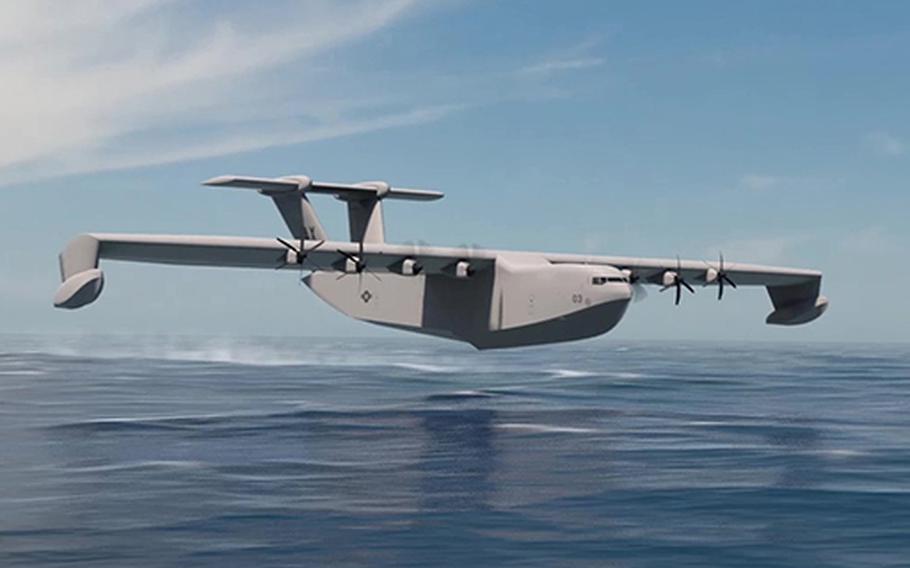
An artist’s rendering shows the Liberty Lifter ekranoplan concept developed for the Defense Advanced Research Projects Agency. (Aurora Flight Sciences)
A U.S. military program that sought to resurrect a secretive Soviet aircraft design has been scrapped, meaning no American successors to a plane dubbed the Caspian Sea Monster are on the horizon anymore.
The Defense Advanced Research Projects Agency effort known as Liberty Lifter, with its concept for aircraft that skim just above large bodies of water and thus can avoid radar detection, was shut down in June.
DARPA’s aim with the program was to build a seaplane that might “transform fast logistics missions” for the Defense Department and also provide “sea-based search and rescue and disaster response at the scale of ships with the speed of air transport,” according to the agency’s Liberty Lifter webpage.
In the three years of the program’s existence, researchers worked on creating modern-day versions of the ekranoplan. The airplane uses the aerodynamic interaction between the wings and the water surface to fly swiftly at low altitude.
Liberty Lifter began in 2022 with the intention of updating the Soviet Union’s pioneering idea for a heavy-lift, long-range seaplane capable of carrying large payloads without relying on ports or runways.
The name ekranoplan incorporates the Russian words for “screen” and “glider.” Soon after puzzled Cold War-era CIA analysts first saw one in the 1960s, the 540-ton craft was christened the Caspian Sea Monster.
Aurora Flight Sciences, a Boeing subsidiary, delivered a digital demonstrator and a preliminary design for DARPA over the past year that featured eight turboprop engines.
The agency had envisioned Liberty Lifter producing “a large flying boat” with a capacity similar to that of the C-17 Globemaster III cargo plane.
C-17 flights typically have payloads of about 60 tons or less, although the plane has a maximum capacity of 85 tons, according to the Air Force.
Before the shutdown of the Liberty Lifter program, projections had called for a test flight in 2028 or 2029, Naval News reported in January.
While the project won’t move forward, DARPA said the Liberty Lifter research generated valuable insights that could inform future efforts. Flight simulations and materials testing confirmed the concept’s technical viability, according to the agency’s website.
But amid the shutdown of the U.S. ekranoplan development effort, an image of a Chinese aircraft of that type that has been widely shared on social media is shining a new spotlight on the technology.
Based on its location in the image, the ekranoplan is being called the Bohai Sea Monster. It is “a new and previously unreported type,” military open source intelligence analyst H. I. Sutton wrote in Naval News, adding that this Chinese ekranoplan is the most ambitious one built in decades.
China’s extensive naval build-up in recent years and threats to Taiwan are among the reasons the Defense Department is looking to prioritize the Asia-Pacific region for deployment of personnel and resources.
Hutton analyzed the possible intended role of the Chinese ekranoplan, noting the numerous large-scale aircraft projects Beijing has in the works.
“One theory is that this is a cargo plane or cargo drone designed for rapid resupply of island garrisons, and to support amphibious landings,” Hutton said.